----------------------
The elegance and charm of 18th-century French models:
Carefully crafted, this very attractive mantelpiece or desk set, made of white marble and finely chiseled gilt bronze, consists of three pieces, namely:
- a delightful clock with an allegorical subject of "Love Triumphant over War":
Set on foliate claw feet, embellished with a central applique with a ribboned motif of a quiver and intersecting flaming torch, a sober marble base scalloped with a leonine skin forms A pedestal with a charming sculptural composition. On a mossy mound surrounded by a frieze of water leaves, two cute toddlers stand, leaning on an "A l'Antique" boundary stone decorated with spandrels patterned with leafy acanthus rosettes. Depicted one seated on a small rocky mound, the other standing, these chubby, lightly draped childlike figures are respectively adorned with martial attributes (helmet with plumed crest, spear and shield) and lovers (wings, quiver with arrow fletchings, bow). By turns mischievous and cuddly, these small effigies playfully evoke the victory of Love (Venus) over warrior Strength (Mars).
Symbolizing Hymen, the pair of Turtle Doves frolic on clouds crossed by a torch with a flaming brand (the ardor of love) located at the damping of the clock, just like the ribboned branch of myrtle (a shrub sacred to Venus) emphasizing the curvilinear shape of its entablature, exalt the sentimental significance of this small timepiece which, with inventiveness and gentleness, "metamorphoses" into a smiling allegorical subject the mythical Marriage of Mars and Venus sung by Homer (The Odyssey, VIII, lines 266-366) or Ovid (The Metamorphoses, Book IV, lines 167-189).
Set on its bezel with alternating pearls of brettes, its white enamel dial indicates the hours and minutes in Arabic numerals by two hands pierced with fleur-de-lis motifs.
An adorable Ode to Love, this small timepiece is based on a model developed in the last third of the 18th century (1770) by François Vion (1737-1790) for the Parisian cabinetmaker and supplier of "rich" clocks Antoine Foullet (1710-1775) whose project drawing entitled "the Altar to Love and Mars" is now held by the National Institute of Art History (INHA) in Paris (Jacques Doucet Collection, Code VI E 15, Res. Fol. 34-Plate 18 of the Collection of designs. Models of clocks, years 1755-1780).
-a pair of two-armed, leafy candelabras with small Fauns: Inspired by models created around the 1770s by the sculptor-ornamentalist Claude-Michel, known as Clodion (1738-1814), these candelabras feature an ingenuous childlike figure. Perched on a small rocky aedicule punctuated by a vine stump, a young Faun, his head adorned with a cluster of grape vine branches, holds two slightly asymmetrical acanthus branches in the hollow of his arms. From their corollas, basins, sockets, and bobeches bloom, finely chiseled with lanceolate leaves, brettes, gadroons, and ribbon-wrapped festoons of pearls. Like the timepiece, these lamps are mounted on a white marble base surrounded by a water leaf frieze and festooned with leonine skin resting on foliate claw feet.
Elegantly balanced in its lines, this high-quality timepiece bears the signature of "E. Wald. Ciseleur" carved into the reverse of its component parts.
Charmingly inventive under the neoclassical trappings then de rigueur, these models, designed and crafted by F. Vion and Clodion, were a resounding success among the aristocratic class of the Age of Enlightenment. Equally beloved in the 19th century by art lovers fascinated by the smiling mythological graces of yesteryear, they were perpetuated with minute ornamental variations by Parisian bronze furniture makers and even renowned cabinetmakers (Sormani fils, Dasson, Linke) to complement their dreamlike Louis XVI style furniture creations with taste and refinement.
A watchmaking ensemble representative of the tradition of French decorative arts of the 18th and 19th centuries.
------------
Marks and Signatures: the three pieces signed on their reverse: "E. Wald. Ciseleur - Movement on its plate numbered: "1570" and stamped by the watchmaker "VINCENTI & CIE / Silver Medal 1855". Monogram of the bronze manufacturer carved on the inner edge of the bezel "C. H"
Materials: White marble, gilt bronze; Enamel and glass.
Dimensions: Clock: H.: 27 cm; W.: 22 cm; D.: 11 cm. - Candelabra: H.: 23 cm; W.: 18.5 cm; base: 10x10 cm.
High-quality Parisian work in the Transition style based on models by François Vion (1737-1790) and Claude Michel, known as Clodion (1738-1814). Last third of the 19th century, circa 1890.
Very good condition.





















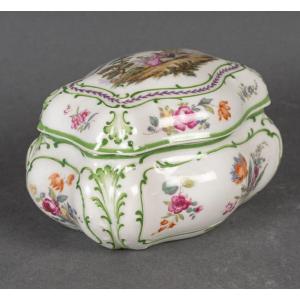
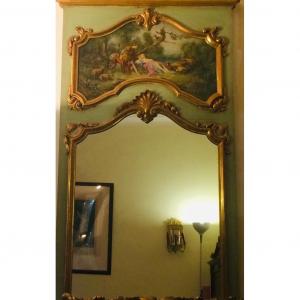
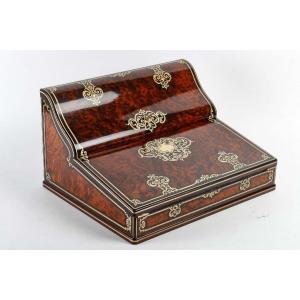

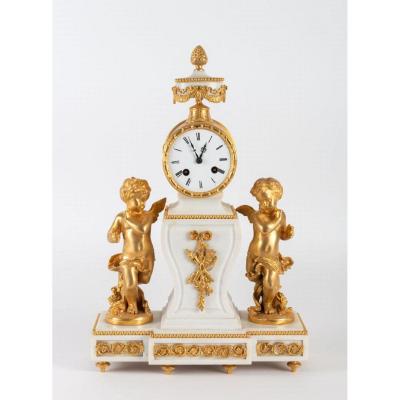
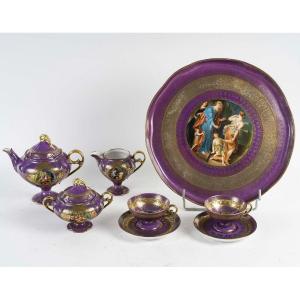




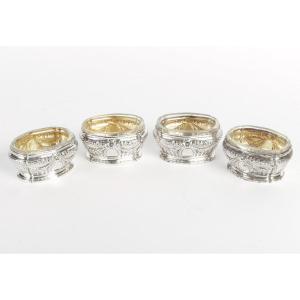
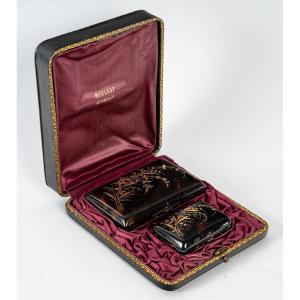










 Le Magazine de PROANTIC
Le Magazine de PROANTIC TRÉSORS Magazine
TRÉSORS Magazine Rivista Artiquariato
Rivista Artiquariato